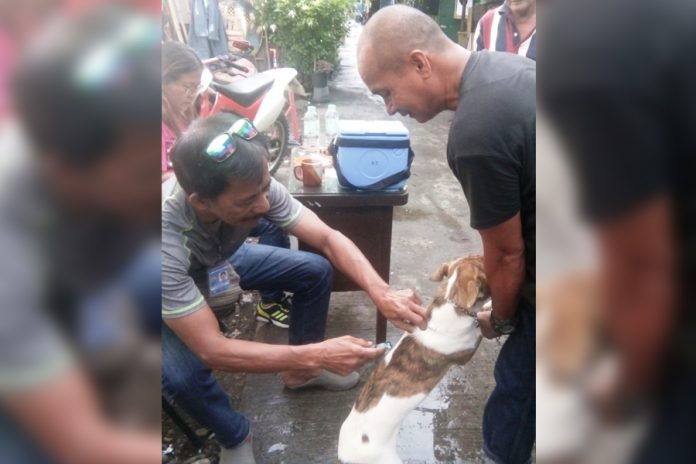
ILOILO City – The city government has P2 million for the procurement of anti-rabies vaccines but it could not find a supplier, according to Councilor Ely Estante.
The chairperson of the Sangguniang Panlungsod’s committee on agriculture, fisheries, aquatic and natural resources, Estante said there is a shortage of anti-rabies vaccines.
A manufacturer in India shut down after the anti-rabies vaccines it delivered to China was found to be contaminated, said Estante.
Private pharmacies still have anti-rabies vaccines, said Estante, but the cost is prohibitive at P1,500 each.
Since January this year, the Office of the City Veterinarian recorded nine rabies cases, including one death this month.
Estante said city government veterinarian Dr. Tomas Forteza Forteza urged Mayor Jose Espinosa III to reconstitute the Iloilo City Rabies Control Council, the body tasked to deal with the rabies problem.
“Sila ang magtuon and come up with recommendations kun ano ang himuon,” said Estante.
Espinosa said he was open to the idea. Early this month he said rabid dogs from adjacent towns must be prevented from entering this city.
The city managed to keep itself free from rabies cases these past four years but not this year, according to Forteza.
One rabies control measure could be “border vaccination” or vaccination of animals in the city’s barangays that shared borders with Iloilo province’s towns.
Iloilo City does not have “natural borders” so it is easy for stray dogs and cats to cross from the towns to the city, said Forteza.
The rabies virus primarily affects the central nervous system. The early symptoms of rabies in people are similar to those of many other infection — fever, headache, and general weakness or discomfort.
As the disease progresses, more specific symptoms appear and may include insomnia, anxiety, confusion, slight or partial paralysis, excitation, hallucinations, agitation, salivation, difficulty in swallowing, and hydrophobia (fear of water).
Among Filipinos, dogs account for 98 percent of rabies infection, cats account for the remaining two percent, according to the Department of Health.
An infected dog can transmit the rabies virus even before it becomes ill, but it will invariably manifest signs and symptoms of rabies including change in behavior such as unprovoked aggressiveness and excitability, paralysis, and hydrophobia within five days, and die within two weeks, after it gets infected./PN



